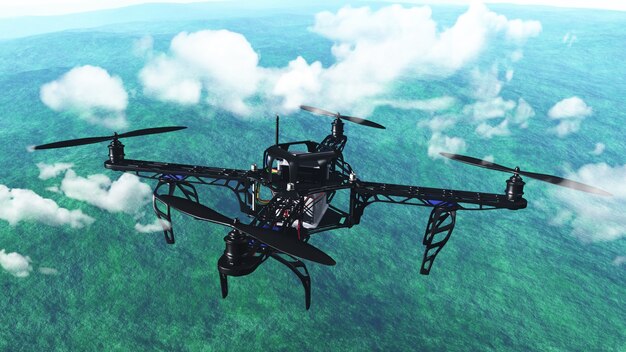
Sponsored article
Drone technology has rapidly evolved to become an indispensable tool across various sectors. From pioneering surveillance techniques to revolutionizing delivery systems, drones offer innovative solutions that drive efficiency and open new possibilities. This article delves into the transformative journey of drones, examining how these flying machines have become central to industries seeking futuristic answers to modern challenges.
Over the years, drone technology has experienced significant aerial advancements, evolving from simple remote-controlled devices to sophisticated, cutting-edge drones. This rapid UAV evolution is driven by enhancements in design, improved capabilities, and the integration of advanced technologies like AI and IoT. Today’s unmanned aircraft systems are more reliable, efficient, and versatile, facilitating numerous applications across different industries. Notably, the incorporation of AI allows drones to conduct autonomous operations with improved decision-making and environmental awareness, which is crucial for tasks such as surveillance and search and rescue missions.
The progress in drone technology has also brought about several key developments that are redefining aerial functionalities:
With these advancements, unmanned aircraft systems are becoming indispensable tools for both military and civilian applications, marking a new era in aerial technology.
The rapid evolution of drone technology has significantly broadened the scope of drone applications, driving transformative changes across various industry sectors. The most profound industry impact is witnessed in agriculture, delivery, and surveillance, where these aerial devices are reshaping traditional practices. In agriculture, drones in agriculture are revolutionizing the way farmers monitor crops, assess soil conditions, and apply pesticides, leading to more precise farming techniques and resource optimization. With high-resolution imaging and real-time data analysis, drones in agriculture not only enhance yield prediction but also contribute to sustainable farming practices, reducing waste and conserving resources.
The logistics sector sees the rise of drones in delivery as a game-changer, streamlining operations and trimming delivery times. By navigating through traffic-congested urban landscapes and reaching remote areas, drones in delivery boost efficiency and expand market reach. Meanwhile, drones in surveillance offer unparalleled capabilities in monitoring vast areas, enhancing security measures, and providing businesses and governments with invaluable insights. Whether through rapid data collection or detailed aerial mapping, the integration of drones in various sectors underscores their vital role in driving operational benefits and efficiency improvements.
The future of drones is poised to revolutionize various industries with emerging drone applications that extend far beyond current capabilities. As technology progresses, we can anticipate potential developments in areas such as urban air mobility, where drones could serve as flying taxis in metropolitan areas, and precision agriculture, utilizing advanced sensors to optimize crop yields and reduce resource use. Drones are also expected to play a pivotal role in environmental monitoring, disaster management, and logistics, with improvements in AI and machine learning enabling more autonomous operations. However, this promising future of drones will inevitably encounter regulatory challenges that need to be addressed.
To safely integrate widespread drone usage, several key considerations must be taken into account, including:
As these factors shape the trajectory of drone technology, a collaborative effort between stakeholders, regulatory bodies, and the general public will be crucial to harnessing drones’ full potential.